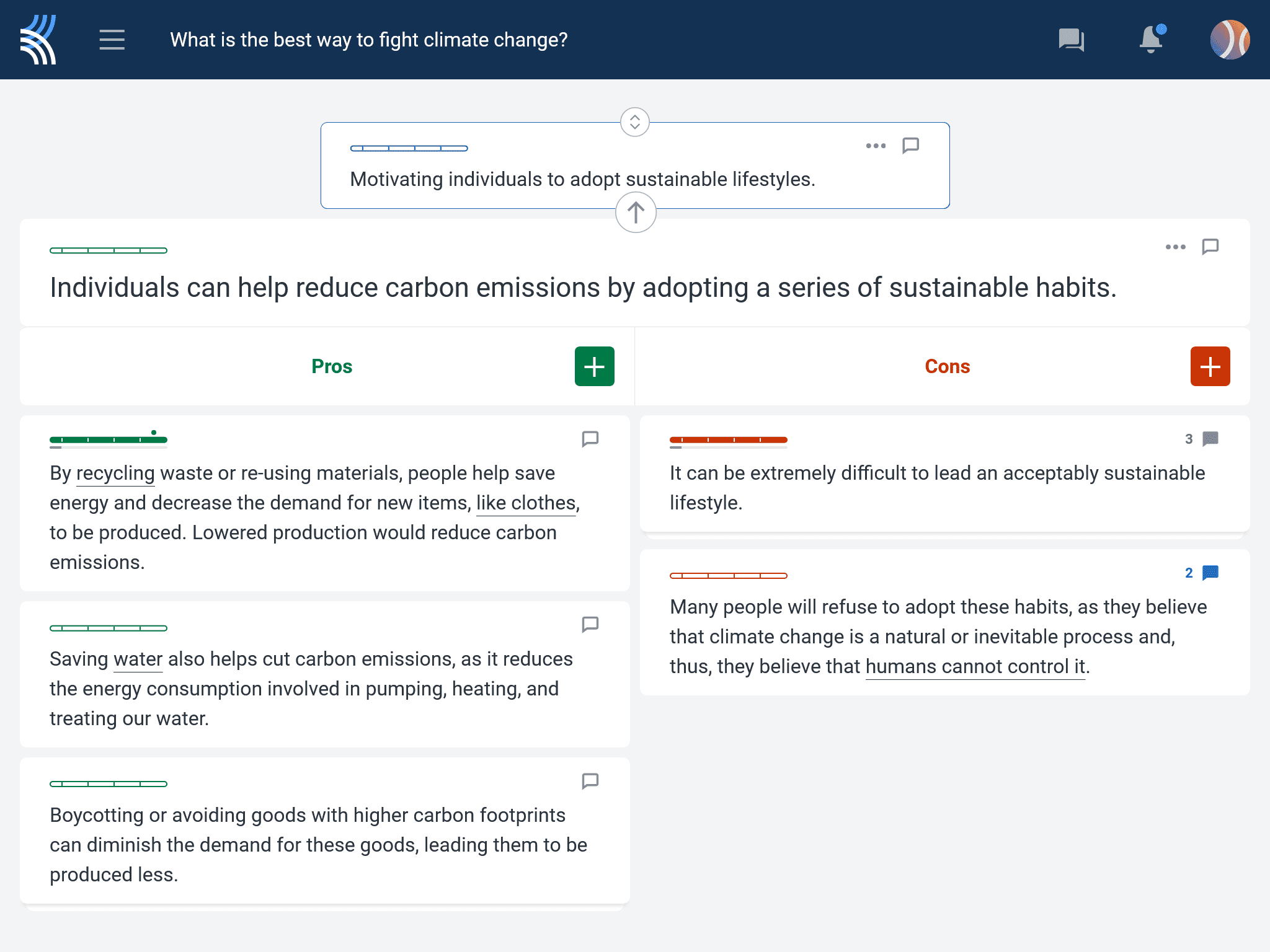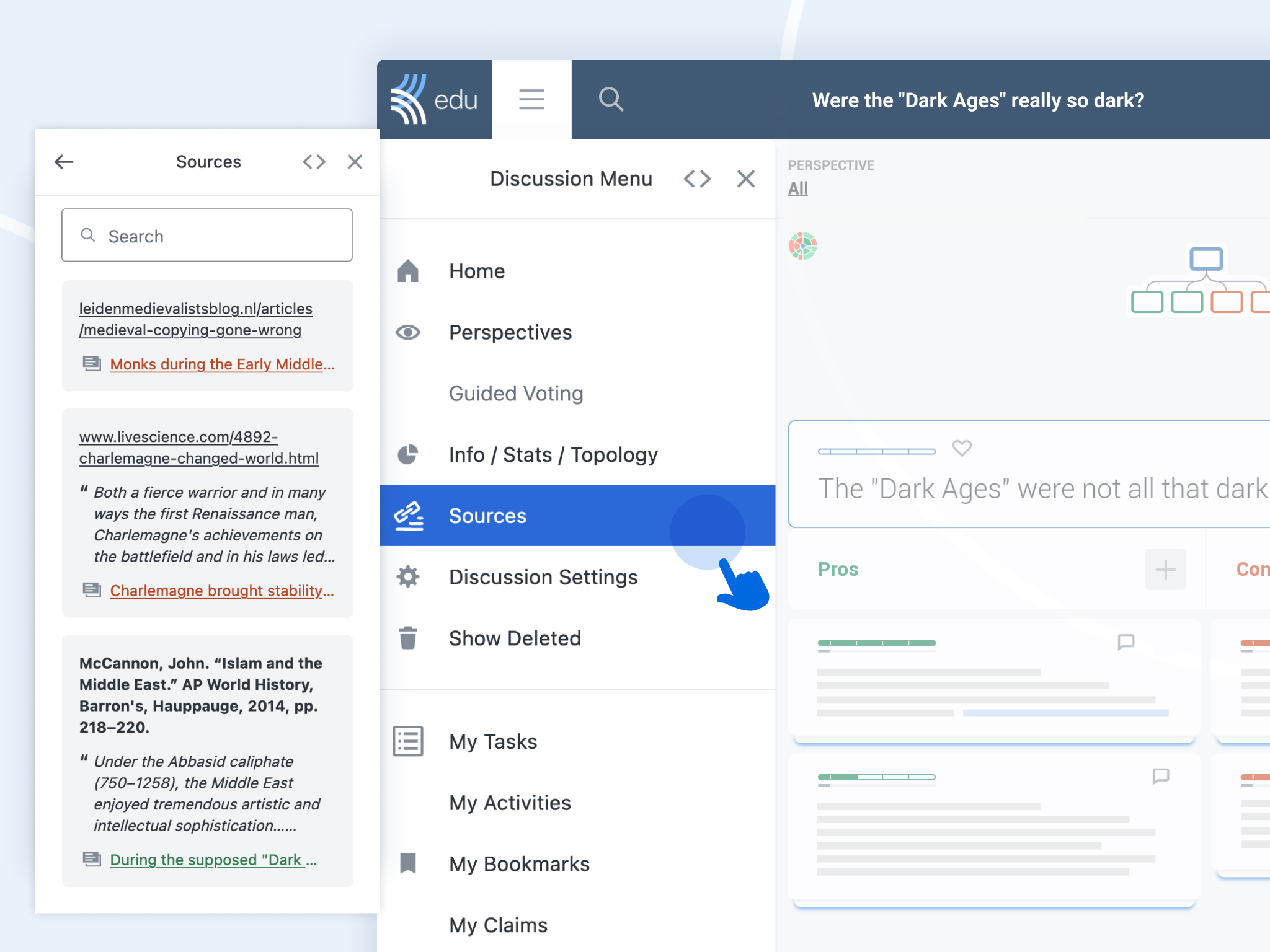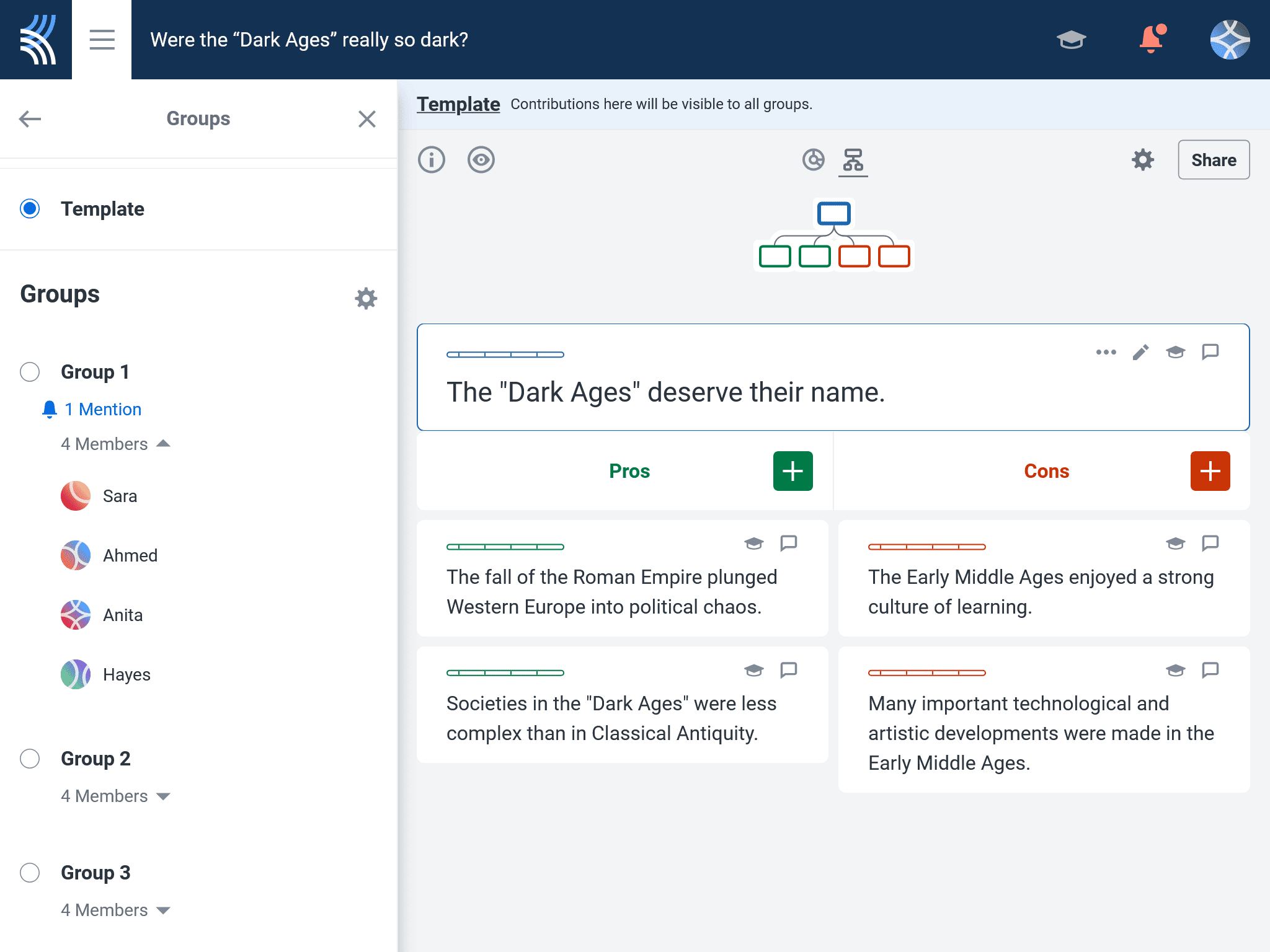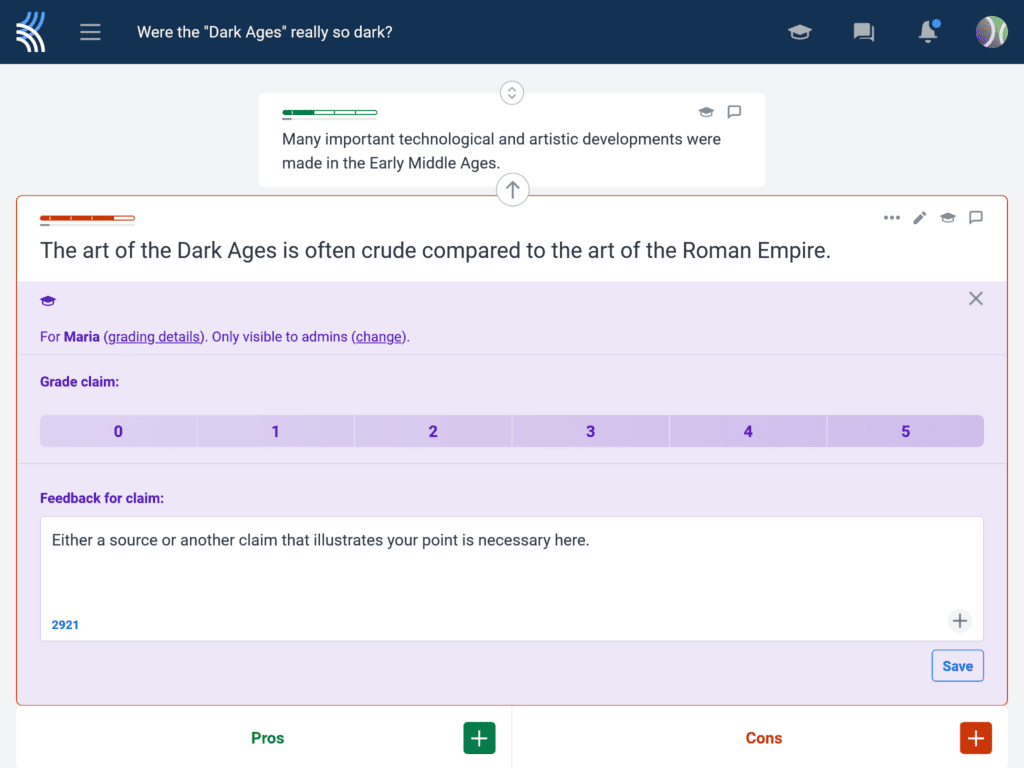Kialo strives to deepen students’ critical thinking skills, making it an excellent tool to help schools meet the goals of the International Baccalaureate (IB) ® curriculum.
Our completely free discussion platform encourages students to articulate their thoughts and engage with diverse perspectives, supporting their development as inquiring, knowledgeable thinkers. In this article, we’ll go over some activities you can do with Kialo Edu to meet IB curriculum goals!
Educators can use Kialo discussions for practical, engaging classroom activities that align with the goals of the IB curriculum. Each discussion is an interactive environment where students can develop skills essential for success in the IB, such as critical thinking, communication, and collaboration.
In a Kialo discussion, students add pros and cons to support or challenge a central thesis, engaging with each other’s arguments to build an interactive map of an entire discussion. Moreover, Kialo’s text-based format increases student engagement and participation in discussions and provides valuable evidence of students’ progress towards achieving the IB’s curriculum goals.
Let’s break down these IB goals and explore how Kialo can support meeting each one.
1. IB goal: Develop inquiring, knowledgeable young people
Try it on Kialo: Plan an IB extended essay, TOK essay, or TOK exhibition commentary
On Kialo, the visual representation of arguments helps students understand how different ideas link together, making it easier to build sophisticated lines of reasoning.

This versatile format serves as an ideal planning tool for the extended essay, the Theory of Knowledge (TOK) essay, and the TOK exhibition commentary. Students can use a blank discussion framework to develop arguments and reflect critically on their chosen topics.
To begin, students add their thesis to the discussion and use the Background Info section to provide context. As they develop their paragraphs in individual branches, the connective lines illustrate logical connections between points and help students identify gaps in their reasoning.
This engages students’ critical thinking skills, enabling them to build well-reasoned arguments and enhancing the overall quality of their IB essays and commentaries.
2. IB goal: Develop caring young people
Try it on Kialo: Support civil discourse by encouraging students to use evidence
Students are encouraged to use evidence to support their claims in Kialo discussions. By doing so, you can foster a culture of civil discourse in the classroom as students engage with the discussion content, rather than the personalities involved in the discussion.
To increase civil discourse opportunities, use Small Group Mode to deliberately group students with different perspectives. Then, select a controversial topic from our Topic Library for them to discuss.
Students begin the discussion by adding their own perspective with evidentiary support linking to an online source or adding a reference to printed material. Then, students carefully read their peers’ claims and supporting sources before responding respectfully with further evidence-based claims.

This encourages an open-minded attitude in students, helping them grow into caring young people as they learn that constructive criticism of a position should be based on evidence, not personal feelings.
3. IB goal: Encourage students to become active learners
Try it on Kialo: Facilitate engaging, student-led lessons
Kialo discussions encourage active engagement from all students. Everyone can contribute immediately and simultaneously, so there’s not just one student dominating the conversation. Students with anxiety or those with speaking difficulties can simply write out their thoughts without the pressure of public speaking.
This format makes Kialo an ideal resource for student-led lessons. Rather than presenting lesson content directly to passive students, you can frame learning objectives into a series of discussion questions. Then, use Small Group Mode to group students, assigning a discussion question to each group.

Students should collaborate within their groups to research the question and submit their findings as claims. Responding to each other’s claims in the discussion helps deepen students’ comprehension. Then, each group can use their discussion to give feedback to the class, sharing their insights and deepening each other’s knowledge.
4. IB goal: Foster international-mindedness
Try it on Kialo: Host discussions and debates with students from other IB schools so students engage with multiple perspectives
On Kialo, students can deconstruct their perspectives into step-by-step arguments, with supporting and opposing arguments displayed side by side. This format encourages students to continuously engage with diverse perspectives, building their critical thinking skills.
To put this into practice, try hosting a Kialo discussion or debate with an IB school from a different region or country. It opens up opportunities for real-time collaboration, enabling students to connect with peers from different cultural backgrounds to further their perspectives.
To initiate a discussion, select a relevant international issue from Kialo’s Topic Library and share the discussion link with all participants. Students could discuss climate change, trade barriers, or immigration policy. Once the discussion starts, students can practice framing their own viewpoints respectfully and thoughtfully while engaging with their peers’ diverse perspectives. These thoughtful interactions foster a deeper understanding of complex global issues and enhance students’ communication skills.
5. IB goal: Use meaningful assessment to support curricular goals
Try it on Kialo: Use our built-in assessment tools to help students meet IB curriculum goals
On Kialo, all discussions are automatically saved, allowing you and your students to revisit them for easy grading or review. Even better, our Grading and Feedback tool simplifies the process of giving summative or formative feedback on your students’ arguments. You can grade each claim on a customizable scale, auto-generate or manually input an overall score, and leave targeted feedback for students.

By default, grades and feedback are hidden from students, allowing you to modify grades and feedback as desired. Once you are ready, simply adjust the visibility settings to share feedback with students.
You can give feedback on individual claims, suggest improvements to sources, or offer guidance on the structure of an essay plan, empowering your students to excel in the IB curriculum!
With these ideas, you can use Kialo to align the goals of the International Baccalaureate curriculum into practical and engaging activities for your IB students — and all for free!
We’d love to hear how you’re using Kialo to meet the goals of the IB with your students. Contact us at feedback@kialo-edu.com or on social media.

